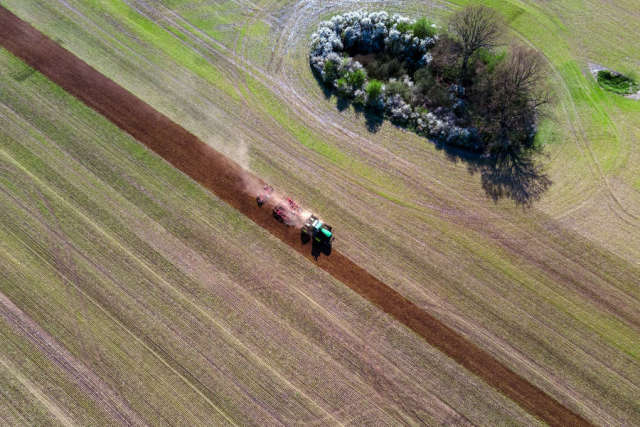Astronomers said that alien agriculture can be seen through a telescope
Modern telescopes are very far from being able to see an alien Earth-type civilization directly - its cities, fields and mechanisms. Nevertheless, astronomers are trying to come up with indirect ways to identify intelligent life. "Newspaper.Ru" figured out an article by American astronomers who suggested looking for traces of farming of other civilizations in the atmosphere of exoplanets.
The invention of agriculture 10 thousand years ago was a turning point in the history of mankind. It allowed getting more food from the same territory compared to hunting and gathering, and led to population growth. This made it possible to establish cities, organize state power and establish trade, that is, to create the civilization that we know.
Agriculture has also affected the Land as a whole. It can be noticed by looking from the air at a flat grid of fields, at changes in the brightness of different parts of the planet, as well as by analyzing the chemical composition of the atmosphere. After agriculture acquired an industrial character, its influence on the atmosphere increased many times.
Jacob Haqq-Misra from the Blue Marble Institute of Space Sciences and his colleagues suggested looking for traces of this influence using powerful telescopes like James Webb, which will begin work this summer. Its cameras will not be able to get a detailed image of an Earth-type planet - at best it will be visible as a dot.
"The spectral signatures of exopherms should be sought as a sign of technological civilization," the authors write.
Nitrogen plays an important role in plant metabolism. In general, the earth's air consists of 78 percent of this gas, but it is difficult for plants to absorb it directly from the atmosphere. Instead, they absorb nitrogen compounds from the soil, in industrial agriculture their source is nitrogen fertilizers, including ammonium (NH4).
The production volumes of ammonium fertilizers are enormous, and when they are used, ammonia (NH3) is released into the air. In terrestrial conditions, ammonia is deposited within a few days, so its presence in the atmosphere can be considered a sign of agricultural activity. In addition, intensive agriculture is a powerful source of nitrous oxide (N2O).
Several spectrographs have been installed on the James Webb Space Telescope, which make it possible to determine the chemical composition of the planet's atmosphere by its radiation, including detecting nitrogen compounds. Therefore, the authors of the study used a simulator that generates the spectrum of a planet with the specified chemical composition to find out whether it is possible to detect alien farmers.
It turned out that modern instruments would not have been able to fix the levels of ammonia and nitrous oxide equal to Earth's. However, James Webb would be able to detect ammonia in a hydrogen-rich atmosphere when it reaches a concentration of five millionths, provided that the planet rotates in a red dwarf system. According to scientists, this concentration roughly corresponds to the scale of agriculture needed to feed a hundred billion people. At the moment, the concentration of ammonia in the Earth's atmosphere reaches five billionths.
- scientists write.
However, such reasoning is based on a number of assumptions. First, hypothetical alien life should use the same metabolism as terrestrial life. Secondly, the intelligent beings of this planet must feed on an analogue of agricultural plants. Thirdly, they should repeat the path of human development by inventing industrial agriculture with abundant use of fertilizers.
Finally, if there is a double of human civilization somewhere, its representatives can specifically reduce emissions of nitrogen-containing gases. Nitrous oxide makes a significant contribution to the greenhouse effect, and with the growth of agricultural production many times, there may be a vital need to control N2O emissions into the atmosphere.
Vasily Zaitsev

